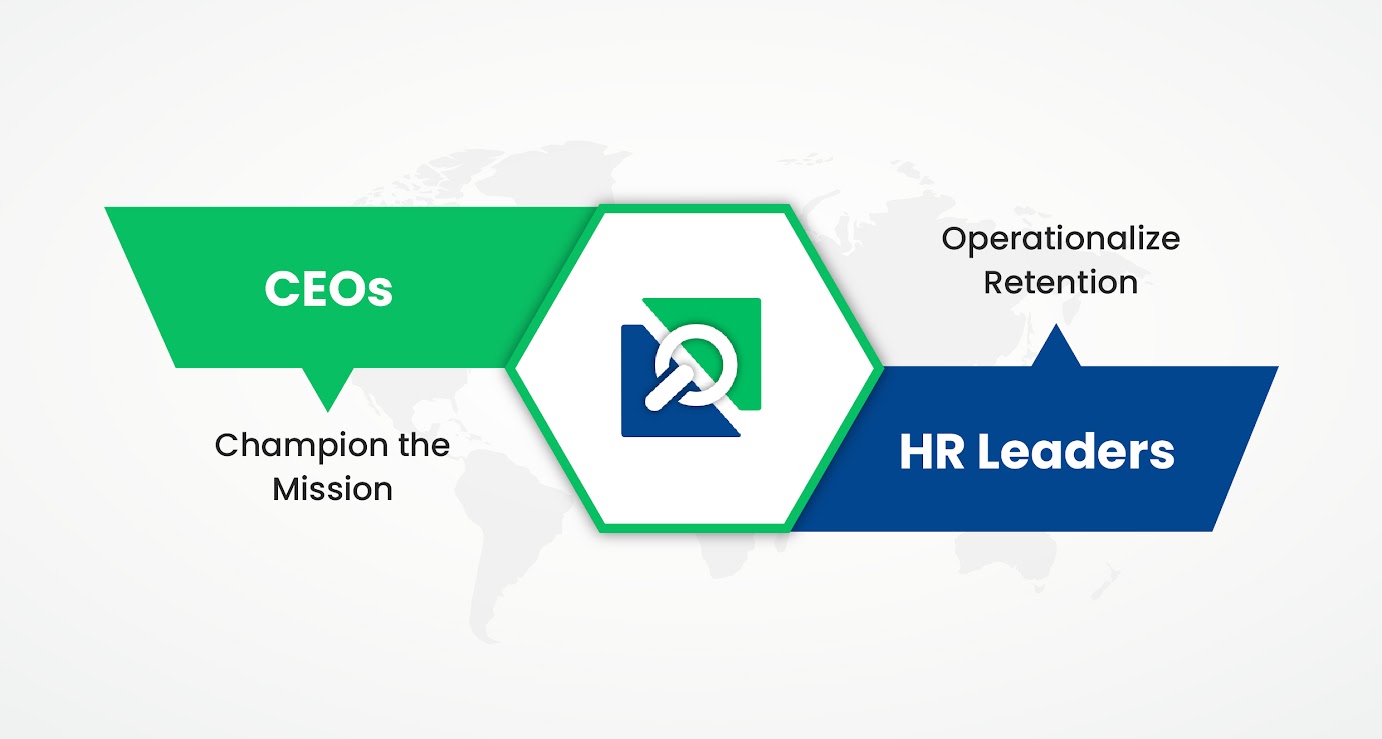
Blogs
Home » Retention in High-Stress Roles: What CEOs and HR Leaders Must Do to Keep Top Talent
From tech and finance to healthcare and logistics, high-stress roles are becoming normal in the industries. As pressure to perform tasks increases, this gives rise to employee burnout, making it difficult to maintain top talent. For CEOs and HR leaders this risk is high. Losing top-tier talent is not only a morale problem; in fact, it’s a direct attack on innovation, efficiency and ultimately on the results as well.
In this blog, we’ll gonna explore how to make a stay brilliant workforce in demanding roles, what causes instability, and now it’s time for leaders to take strategic actions to stay ahead in today’s highly competitive economy.

Many remarkable performers are victims of their success. They are assigned challenging tasks. These individuals struggle with continuous deadlines, late-night calls, and an endless workload. Even the most adaptive employees may burn out if they don’t get proper support.
Talented employees bloom in growth and acceptance. When their efforts are being ignored or unrewarded, there is a chance that engagement may drop. In a stressful environment, little gestures of appreciation often drop out, causing feelings of isolation.
The main reason for a toxic environment is that the leaders possess inefficient communication skills, or they are providing emotional support to employees. The lack of unity between upper management and front-line teams makes it tough for employees to feel understood and appreciated.
In stressful roles, employees often compromise on development for better delivery. But without a clear vision of advancement, they start seeking greener pastures somewhere they can both grow and breathe.

How to Keep Top Talent: Proven Strategies
For maintaining top talent, CEOs and HR leaders must be reactive, conscious, and decisive
Encourage availability and clarity. Employees should feel that they can express, ask for help, and make mistakes without being judged. Psychological safety helps in achieving long-term engagement.
Instead of asking employees to do more tasks with less time, analyze what truly matters. Influence automation, delegation, and time-blocking to avoid unnecessary pressure. Prioritize setting realistic goals, clarity can prove to be a game-changer.
Well-being should be the benchmark of success. Offer access to mental health services, flexible work arrangements, and scheduled time off. Convey that rest is not a sign of weakness, in fact it’s productive.
Go beyond standard performance reviews. Create altered detection programs that are line up with individual motivators, whether it’s applause, bonuses, or development opportunities.

Top performers are drawn to meaningful work. As a CEO, you should constantly reinforce the “why” behind your organization’s vision. When employees believe and consider themselves as part of a milestone, it is higher chances that they’ll stick around even in tough storms.
HR teams should trace retention information, thoroughly monitor engagement trends, and create tailored interpose. Personalized retention strategies based on department, role, and even personality type are far more effective than one-size-fits-all programs.
Retention doesn’t start after someone joins your team. It begins during hiring.
When you hire top talent, prioritize cultural alignment as much as credentials. Candidates who naturally align with your values and thrive in high-pressure situations are more likely to succeed long term.
Collaborating with a suitable recruitment process outsourcing provider to ensure that you’re always sourcing candidates who are not only incredibly talented but also trained emotionally for high-stress roles. They are experts in recognizing red flags early and refining your hiring pipeline, reducing turnover down the line.

Employees need to see a future with your company. Build individualized career roadmaps that include skill development, mentorship, and clear promotion criteria. When top performers can visualize their progression, they’re more likely to stay through the hard times.
Annual reviews are not only important, but continuous feedback is also. Regular face-to-face, quick surveys, and open forums keep communication in a flow and reveal issues before they reach a peak. More importantly, act on the feedback you receive. It is significant to act on the feedback you receive.
In a phase where attention spans are shrinking and job markets are expanding, it is really important to keep top talent. CEOs and HR leaders, are not just responsible for offering better perks, but it’s about creating strong systems, compassionate leadership, and sensible work environments.
Having sufficient knowledge of how to keep top talent, streamlining your recruitment process, outsourcing a master plan, and investing in your people from the start, your organization will not just successfully endure high-stress challenges but will also shine because of them
Are you ready to build a retention-first strategy for your high-impact teams? Start by aligning your recruitment and retention efforts today.
Recent Blogs

How One Bad Hire Can Throw Everything Off – And What It Costs You


What Most Staffing Firms Get Wrong About the Entertainment Industry






©Rolehunting all rights Reserved.